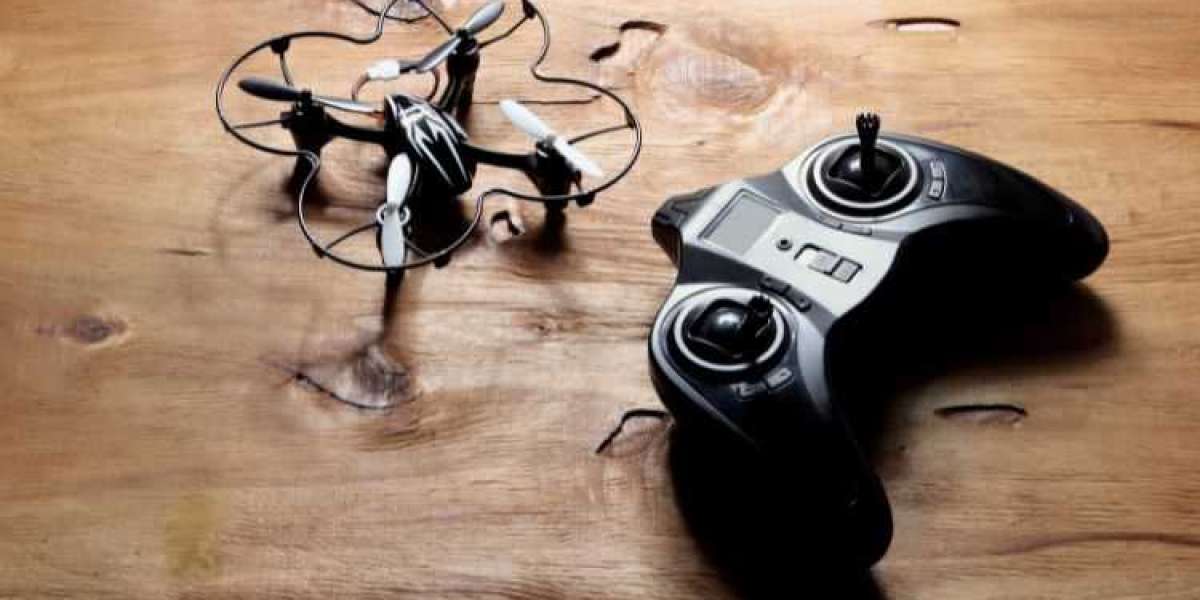The global small drones market size is assessed to grow in the forecast period of 2024-2032 at a CAGR of 13%. The market growth is being driven by robust military expenditure towards small drones for defense purposes and increasing usage in various commercial applications. As technological advancements continue to make drones more accessible and versatile, their applications across industries are expanding rapidly. This blog post will delve into the detailed segmentation, regional analysis, market dynamics, and competitive landscape of the small drones market.
Market Overview
Small drones, also known as unmanned aerial vehicles (UAVs), come in various shapes and sizes and are used for a multitude of purposes. They are pivotal in industries ranging from military and defense to agriculture and logistics. The current market size of small drones is substantial, and with a projected CAGR of 13% from 2024 to 2032, it is clear that the industry is on an upward trajectory. This growth can be attributed to increasing investments in drone technology, rising demand for surveillance and monitoring, and expanding commercial applications.
Market Segmentation
By Type
Fixed-Wing Drones: These drones have a rigid wing structure and are similar to traditional aircraft. They are ideal for long-distance flights and are commonly used in agricultural and mapping applications.
Rotary-Wing Drones: Featuring one or more rotors, these drones are highly maneuverable and can hover in place. They are extensively used in filming, photography, and inspection tasks.
Hybrid/Transitional Drones: Combining features of both fixed-wing and rotary-wing drones, these drones offer versatility and efficiency. They are suitable for complex operations requiring both endurance and precision.
By Power Source
Lithium-Ion: These batteries are popular due to their high energy density and longer flight times, making them a preferred choice for various drone types.
Solar Cell: Solar-powered drones can stay airborne for extended periods by harnessing solar energy, making them ideal for environmental monitoring and agricultural use.
Fuel Cell: Offering longer endurance than traditional batteries, fuel cells are gaining traction for their potential in long-duration missions.
Hybrid Cell: Combining batteries and fuel cells, hybrid power sources provide a balance between endurance and power efficiency, suitable for a range of applications.
By Size
Mini Drones: Typically used for recreational purposes, these drones are also finding applications in commercial sectors due to their affordability and ease of use.
Micro/Nano Drones: These tiny drones are used in specialized applications like medical deliveries and indoor inspections where maneuverability in tight spaces is crucial.
By Application
Military and Defense: Drones are extensively used for surveillance, reconnaissance, and combat missions. Increased defense budgets worldwide are propelling the growth in this segment.
Commercial: Drones are revolutionizing industries like agriculture, real estate, and logistics by providing cost-effective and efficient solutions.
Civil and Government: Used for tasks such as disaster management, law enforcement, and infrastructure inspection, drones are becoming vital tools for government agencies.
Others: Including applications in entertainment, sports, and scientific research, the potential uses for small drones are vast and continually expanding.
Regional Analysis
North America
North America leads the small drones market, driven by substantial investments in drone technology and favorable regulatory frameworks. The U.S. military’s significant expenditure on drone capabilities further bolsters this region’s market dominance.
Europe
Europe is witnessing rapid adoption of small drones, especially in the commercial sector. Countries like Germany and the UK are at the forefront, integrating drones into agriculture, logistics, and surveillance.
Asia Pacific
The Asia Pacific region is expected to experience the fastest growth, with countries like China and India investing heavily in drone technology. The region's expanding agricultural sector also drives the demand for small drones.
Latin America
In Latin America, the use of drones in agriculture and infrastructure projects is on the rise. Brazil and Mexico are key markets driving growth in this region.
Middle East and Africa
The Middle East and Africa are gradually embracing drone technology, primarily for defense and surveillance purposes. The commercial applications are also picking up pace in countries like the UAE and South Africa.
Market Dynamics
Drivers
Technological Advancements: Innovations in drone technology are making them more efficient, affordable, and capable, driving market growth.
Increasing Demand for Surveillance and Monitoring: Drones provide a cost-effective solution for surveillance in both military and commercial sectors.
Expanding Commercial Applications: Industries such as agriculture, logistics, and real estate are increasingly utilizing drones to enhance efficiency and reduce costs.
Restraints
Regulatory Challenges: Stringent regulations and airspace restrictions can hinder market growth.
High Costs: Advanced drones and their maintenance can be expensive, limiting their adoption, especially in cost-sensitive regions.
Opportunities
Innovations in Power Sources: Developments in battery and fuel cell technology present significant growth opportunities.
Expanding Applications in New Industries: Emerging industries and applications continue to create new market opportunities for small drones.
Challenges
Safety and Privacy Concerns: Issues related to the safe operation of drones and privacy invasion are major challenges.
Competition from Large Drones and Alternative Technologies: The market faces competition from larger, more capable drones and other advanced technologies.
Competitive Landscape
Major players in the small drones market include DJI, Parrot SA, AeroVironment, Inc., and 3D Robotics. These companies are at the forefront of innovation, continually improving their product offerings to maintain a competitive edge. Market share analysis indicates that DJI dominates the market, followed by significant contributions from other key players.
Future Trends and Forecast (2024-2032)
Emerging technologies such as AI and machine learning are expected to revolutionize the small drones market. The integration of these technologies will enhance the capabilities of drones, making them more autonomous and efficient. Additionally, advancements in power sources and materials will contribute to the development of more durable and longer-lasting drones. The market is expected to see significant growth in commercial applications, particularly in agriculture and logistics.



